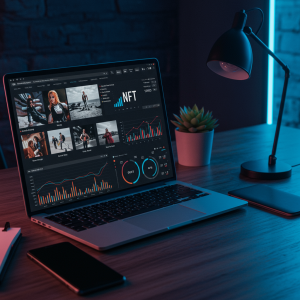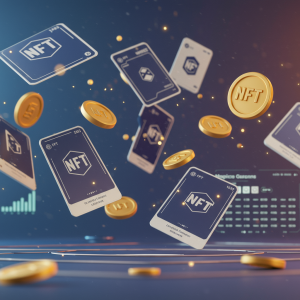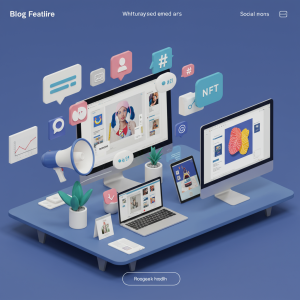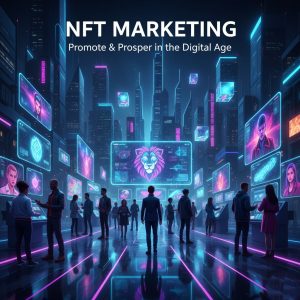Metaverse Showrooms: How Virtual Experiences Are Transforming NFT Marketing

In the rapidly evolving world of blockchain and digital art, traditional marketing strategies are giving way to immersive experiences that captivate audiences in entirely new ways. Metaverse showrooms—virtual galleries hosted in decentralized 3D environments—have emerged as a cutting-edge tool for NFT creators, collectors, and platforms to showcase work, engage communities, and drive sales. In this comprehensive guide, we explore why metaverse showrooms matter, how to build one, and best practices to maximize their impact on your NFT marketing strategy.
What Are Metaverse Showrooms?
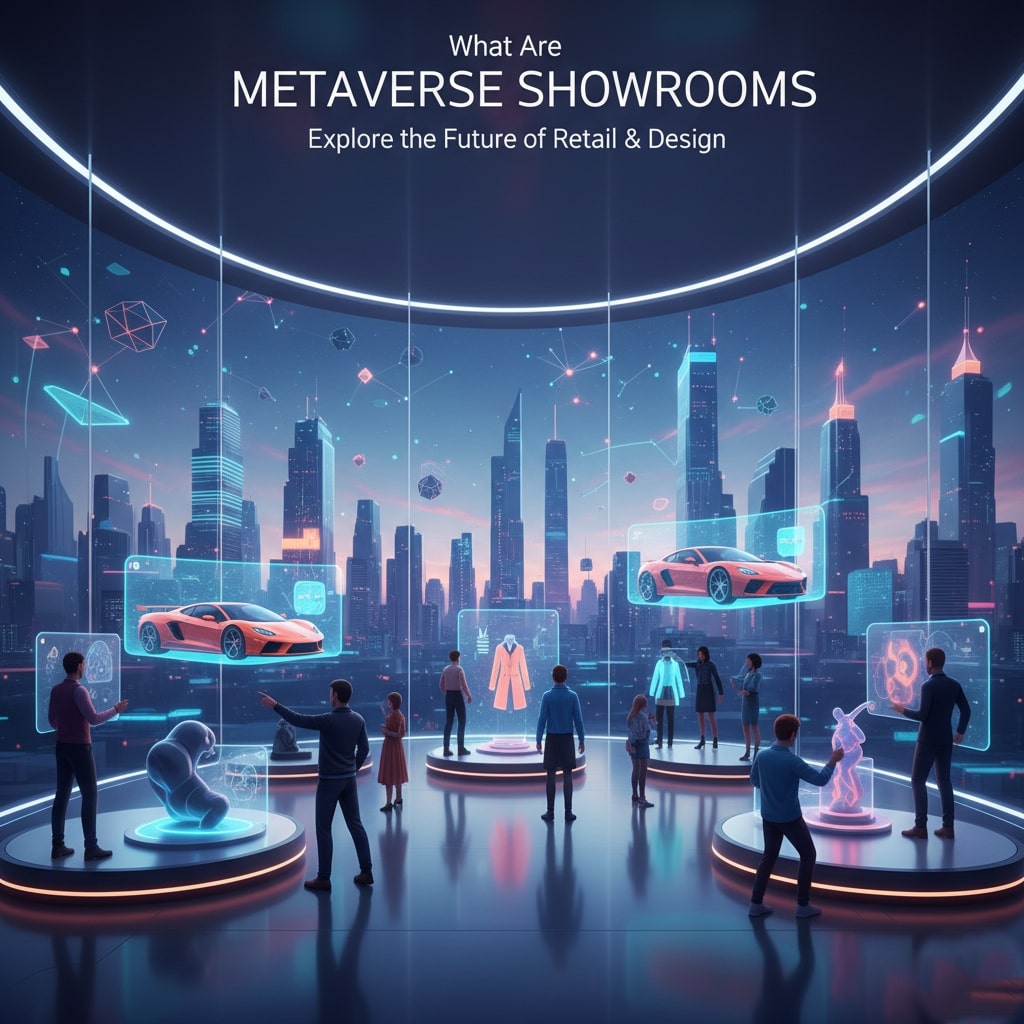
Metaverse showrooms are online spaces within virtual worlds—such as Decentraland, The Sandbox, or custom-built Web3 environments—where users can explore, interact with, and purchase NFTs. Unlike static webpages or image-based galleries, these virtual showrooms offer 3D walkthroughs, real-time social interaction, and customizable exhibition layouts. Visitors navigate with avatars, view digital art on virtual walls, and even attend live events or guided tours, creating a deep sense of presence that traditional channels cannot match.
Why Use Metaverse Showrooms for NFT Marketing?
There are four core benefits to integrating a metaverse showroom into your NFT marketing plan:
- Immersive Engagement: Users spend more time exploring interactive 3D environments than scrolling through static webpages, leading to higher dwell times and stronger brand recall.
- Social Proof: Virtual events, guided tours, and real-time chat features foster community interaction and a sense of exclusivity. When collectors see others bidding or chatting, it builds FOMO (fear of missing out) and trust in your project.
- Global Accessibility: No geographic barriers limit attendance. A metaverse showroom is open 24/7 to anyone with an internet connection, expanding your potential audience across time zones.
- Data Insights: Track user paths, dwell times, and interaction hotspots to refine exhibit layouts, promotional messaging, and drop timings.
Choosing the Right Metaverse Platform
Selecting a platform depends on your objectives, technical expertise, and target audience. Consider these factors:
- User Base: Decentraland and CryptoVoxels host established communities actively exploring NFT art. If you prioritize high foot traffic, start there.
- Customization Options: Sandbox and Somnium Space offer robust builder tools for completely custom environments, but may require greater development resources.
- Integration Ease: Platforms with native marketplace integration (e.g., OpenSea listings in Sandbox) streamline purchasing workflows, reducing friction for buyers.
- Cost and Ownership: Evaluate land costs, rental fees, and smart contract royalties. Some ecosystems charge ongoing gas or platform fees that impact ROI.
Designing a Compelling Virtual Exhibition
Effective showroom design balances aesthetics, UX, and brand storytelling. Follow these design principles:
- Visual Hierarchy: Place high-profile pieces in central, well-lit areas. Use spotlights, animated banners, or color contrasts to draw attention to key NFTs.
- Spatial Flow: Guide visitors through a narrative by arranging works chronologically or thematically. Incorporate signage, arrows, or subtle floor patterns to direct traffic.
- Interactivity: Embed info panels, audio guides, or clickable hotspots that reveal artist statements, scarcity details, or provenance. Gamify the experience with hidden easter eggs or scavenger hunts.
- Accessibility: Ensure text readability, provide translation options for global audiences, and optimize performance for lower-end devices to avoid alienating potential collectors.
Promoting Your Showroom Launch
A meticulously designed showroom needs strategic promotional efforts to drive attendance and engagement:
- Social Media Teasers: Release sneak-peek videos or augmented reality filters featuring the showroom’s key pieces. Use countdowns and exclusive early-access codes to build hype.
- Influencer Partnerships: Collaborate with NFT collectors, digital artists, or metaverse explorers who can host guided tours or livestream their walkthroughs to their audiences.
- Email Campaigns: Target your existing newsletter subscribers with personalized invites, VIP passes, and behind-the-scenes content from your creative process.
- Community Events: Host AMAs, panel discussions, or virtual DJ sets inside your showroom. Interactivity drives word-of-mouth and extends dwell time.
Integrating Sales and Drop Mechanics
To convert explorers into buyers, integrate seamless purchase flows and scarcity-driven mechanics:
- On-Site Market Links: Link each exhibit directly to its listing page. Use pop-up confirmations and gas-fee estimates to reduce checkout friction.
- Timed Drops: Schedule limited-time minting windows with real-time countdown clocks in the showroom, encouraging immediate action.
- Tiered Access: Offer pre-mint whitelist spots or exclusive edition reveals to early supporters. Communicate tier benefits clearly in the environment.
Measuring Success: Metrics to Track
Data-driven insights enable continuous improvement. Key performance indicators (KPIs) to monitor include:
- Visitor Count: Total unique avatars entering the showroom and return visits over time.
- Dwell Time: Average session duration and time spent at specific exhibits.
- Engagement Actions: Click-through rates on info hotspots, social shares, and participation in events or chats.
- Conversion Rate: Percentage of visitors who proceed to purchase or mint an NFT from within the showroom.
- Revenue Generated: Total sales volume and average sale price compared against marketing spend.
Future Trends in Metaverse NFT Marketing

As the metaverse ecosystem matures, expect innovations such as cross-realm interoperability (porting showrooms between worlds), AI-powered personalization (custom gallery layouts based on user behavior), and deeper blockchain integrations (on-chain provenance trails displayed in real time). Staying ahead of these trends ensures your NFT marketing remains at the forefront of digital innovation.
Conclusion
Metaverse showrooms represent a seismic shift in how NFTs are marketed, transforming passive browsing into dynamic, communal experiences. By selecting the right platform, crafting an engaging exhibition, promoting strategically, and analyzing performance data, you can unlock unprecedented levels of audience engagement and sales. Embrace the future of virtual experiences today, and position your NFT collection for lasting success in the ever-expanding metaverse.

